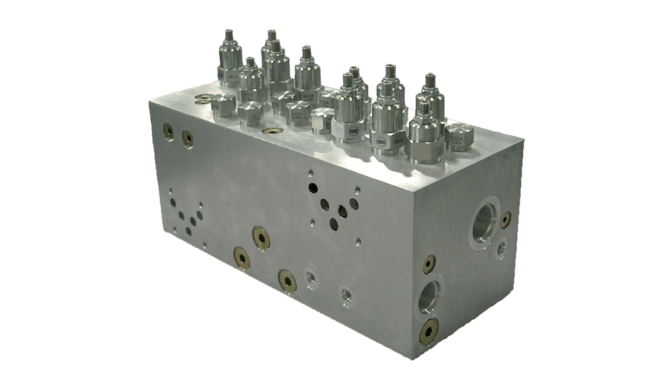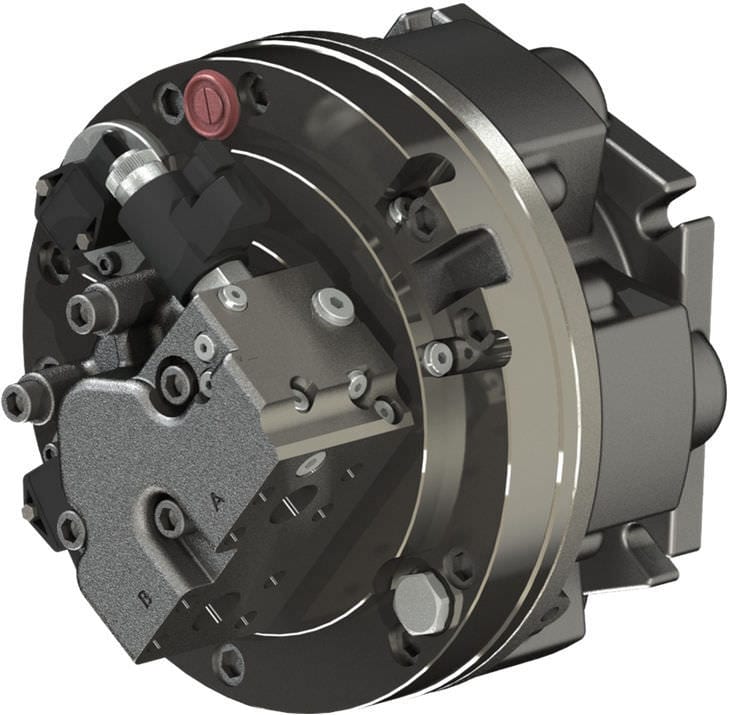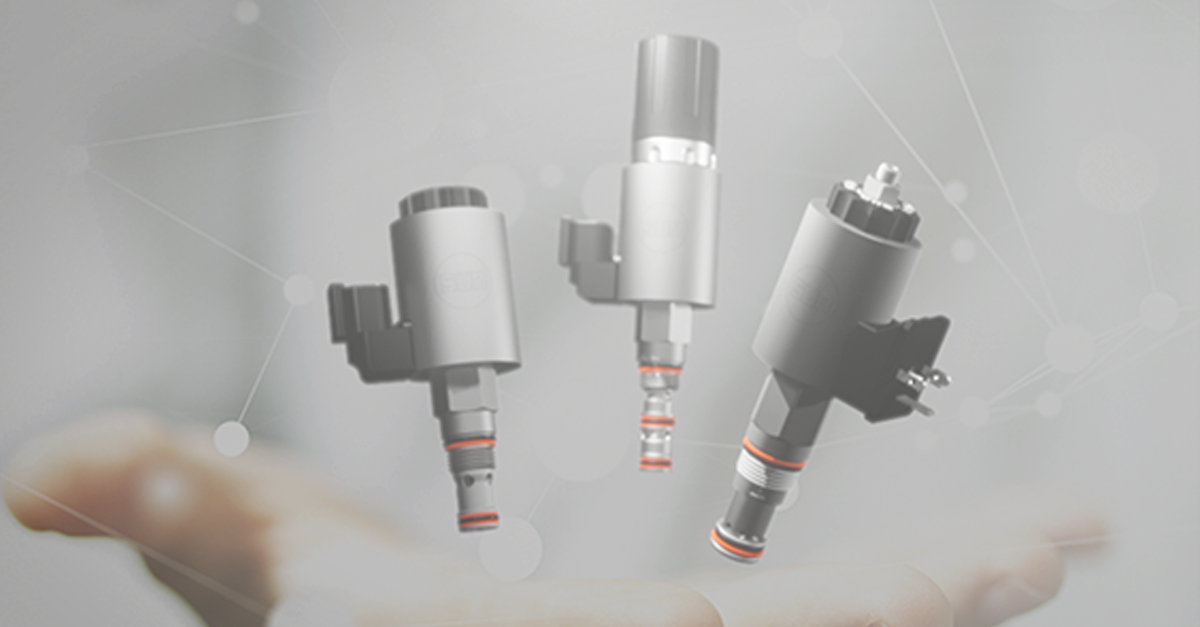News & Insights
The Future of Hydraulic Equipment: Trends, Innovations & Advancement

Hydraulic equipment is a vital component of many industrial and manufacturing processes, providing the power and control needed to move heavy loads, control machinery, and perform a wide range of tasks. However, working with hydraulic equipment can also be hazardous if proper safety procedures are not followed. Understanding the applications, benefits, and safety considerations of hydraulic equipment is essential for anyone working with or around these systems.
Custom Fluidpower will provide an overview of hydraulic equipment, including how it works, its applications and we will also explore the many benefits of hydraulic equipment. Additionally, we will examine the safety considerations that come with working with hydraulic equipment, including proper maintenance, lockout procedures, and other safety measures to ensure the health and safety of operators and those working nearby.
Whether you are a hydraulic equipment operator, maintenance professional, or safety manager, this blog will provide general valuable insights into the applications, benefits, and safety considerations of hydraulic equipment.
What is hydraulic equipment?

Hydraulic equipment is a type of machinery that uses hydraulic fluid power to operate. The power is generated by transferring energy and force through liquids, typically oil, to move components of the equipment.
Hydraulic equipment is used in a variety of applications, from powering heavy machinery to lifting heavy loads. The equipment consists of different components, such as pumps, motors, cylinders, valves, hoses, and fittings, which work together to perform specific tasks. It is commonly used in industrial, construction, and manufacturing settings due to its ability to handle heavy loads and operate under high fluid pressure.
Regular maintenance and repairs are crucial to ensure the safe and efficient operation of hydraulic equipment, making it important to work with a trusted hydraulic equipment services company like Custom Fluidpower.
What is hydraulic equipment used for?

Hydraulic equipment is used in a wide range of industries for various purposes. One of the most common applications is in heavy machinery used in agriculture, construction, chemical processing, mining, and manufacturing. Hydraulic power is used to operate moving parts of equipment, such as excavators, cranes, and bulldozers, enabling them to lift and move heavy loads with ease. This makes construction and manufacturing tasks more efficient and helps to reduce the risk of worker injury.
Hydraulic equipment is also commonly used in transportation vehicles such as aeroplanes, ships, and cars. Hydraulic power is used in aircraft to operate landing gear and flaps, and in ships to control the rudder and anchor. In cars and trucks, hydraulic power is used in the steering and braking systems. This helps to improve safety on the roads and makes it easier for drivers to manoeuvre their vehicles.
Another application of hydraulic equipment is in the production and processing of materials. For example, hydraulic presses are used in the manufacturing of products such as automotive parts, circuit boards, and plastics. They are also used in the processing of materials such as paper, textiles, and food products. The hydraulic power allows for precise and consistent fluid pressure application, making it an ideal choice for these applications.
Overall, hydraulic equipment is a versatile technology that is used in a wide range of industries to improve efficiency, safety, and precision. It plays a critical role in modern-day industrial operations, making tasks that were once difficult or impossible much easier to accomplish.
What are examples of hydraulic devices?
Hydraulic devices and hydraulic components are used in a variety of applications across many industries. One of the most common hydraulic devices is the hydraulic cylinder. These devices use hydraulic fluid pressure to generate linear motion, allowing them to perform tasks such as lifting heavy loads or moving machinery. Hydraulic cylinders are used in a variety of applications, including construction equipment, manufacturing, and transportation.
Another example of a hydraulic device is the hydraulic motor. These devices use hydraulic pressure to generate rotational motion, allowing them to power machinery such as conveyor belts or drilling rigs. Hydraulic motors are commonly used in industrial and agricultural applications, as well as in transportation vehicles such as cranes and forklifts.

Hydraulic pumps are another common hydraulic device. These devices are used to generate hydraulic pressure by moving fluid through a system. Hydraulic pumps can be found in a variety of applications, from power steering systems in automobiles to industrial manufacturing equipment.
Other examples of hydraulic devices include hydraulic presses, hydraulic brakes, and hydraulic valves. Hydraulic presses use hydraulic pressure to apply force, allowing them to perform tasks such as bending or shaping metal. Hydraulic brakes use hydraulic pressure to stop a vehicle or machine, while hydraulic valves are used for flow control of hydraulic fluid flow rate through a system.
What are future trends associated with hydraulic equipment?
The global hydraulic equipment market continues to flourish, showcasing remarkable growth in recent years. With a market size valued at USD 43,825 million in 2021, this industry is poised for further expansion to a predicted USD 62,375 million from 2022 to 2030 . This growth is expected to be driven by increasing industrialisation and infrastructure development worldwide. Countries like China, India, and Brazil are playing a pivotal role in this expansion. Alongside this growth, the industry is witnessing a shift towards automation and integration.
Hydraulic machinery is renowned for its capacity to execute high-power tasks through the force generated by its components. The hydraulic industry’s future holds potential for leveraging electronics to enhance hydraulic power control. The integration of electronics with hydraulic systems is revolutionising the market. By combining electronics and fluid power, electro-hydraulic systems offer precise control, automation, and advanced functionalities like load sensing and intelligent feedback mechanisms. This integration also contributes to enhanced safety and reliability.
There is a global focus on optimising hydraulic systems for agricultural use. One aspect of this is through automation of hydraulic equipment through the use of sensors and actuators to monitor and control various parameters, such as pressure, flow rate, and position. Automation in hydraulic equipment offers several benefits in agriculture. It enables the implementation of precision farming techniques, such as variable rate applications and site-specific crop management. For example, automated hydraulic systems can adjust the application of fertilisers, pesticides, or irrigation based on specific field conditions, optimising resource usage and reducing waste.
Lastly, energy efficiency has become a key focus in the hydraulic equipment market. As the world emphasises sustainability, manufacturers are developing energy-efficient hydraulic systems that minimise energy losses and incorporate regenerative technologies. The main issue concerning hydraulic equipment is its energy consumption, which leads to increased costs in both purchasing and operating industrial machinery and plants. The high pressure within hydraulic systems results in significant energy usage, further driving up energy expenses. To mitigate these additional costs, the deployment of energy-efficient hydraulic equipment has become crucial.
What future avenues of innovation and advancement in hydraulic devices?

Hydraulic device market trends across various industries continue to dictate potential innovation and advancement. As technology continues to evolve in response, here are three promising avenues that are expected to shape the future of hydraulic devices.
Electrification and hybridisation
One key area of innovation lies in the integration of electric and hydraulic systems. By combining the strengths of both technologies, electrified and hybrid hydraulic devices offer improved efficiency, reduced energy consumption, and enhanced control capabilities. This trend aligns with the growing demand for energy conservation, emissions reduction, and sustainable hydraulic solutions. Expect to see the development of more efficient and eco-friendly hydraulic devices through the integration of electric and hydraulic technologies.
Smart and intelligent hydraulic systems
The rise of the Internet of Things (IoT), artificial intelligence (AI), and data analytics has opened the doors to smart and intelligent hydraulic systems. By incorporating sensors, connectivity, and advanced algorithms, these systems can gather real-time data, optimise performance, enable predictive maintenance, and provide valuable insights for decision-making. This integration of digital technologies with hydraulic devices enhances efficiency, reliability, and overall system performance. Look forward to intelligent hydraulic devices that can adapt, learn, and optimise their operations based on real-time data analysis.
Lightweight and compact designs
The demand for lightweight and compact hydraulic devices continues to grow, particularly in mobile applications such as construction equipment, agricultural machinery, and aerospace. Advancements in material science, including the use of high-strength composites and alloys, enable the development of lighter and more compact hydraulic components. These designs offer improved manoeuvrability, fuel efficiency, and reduced environmental impact. Expect to see more innovative approaches to reducing the size and weight of hydraulic devices without compromising performance and reliability.
